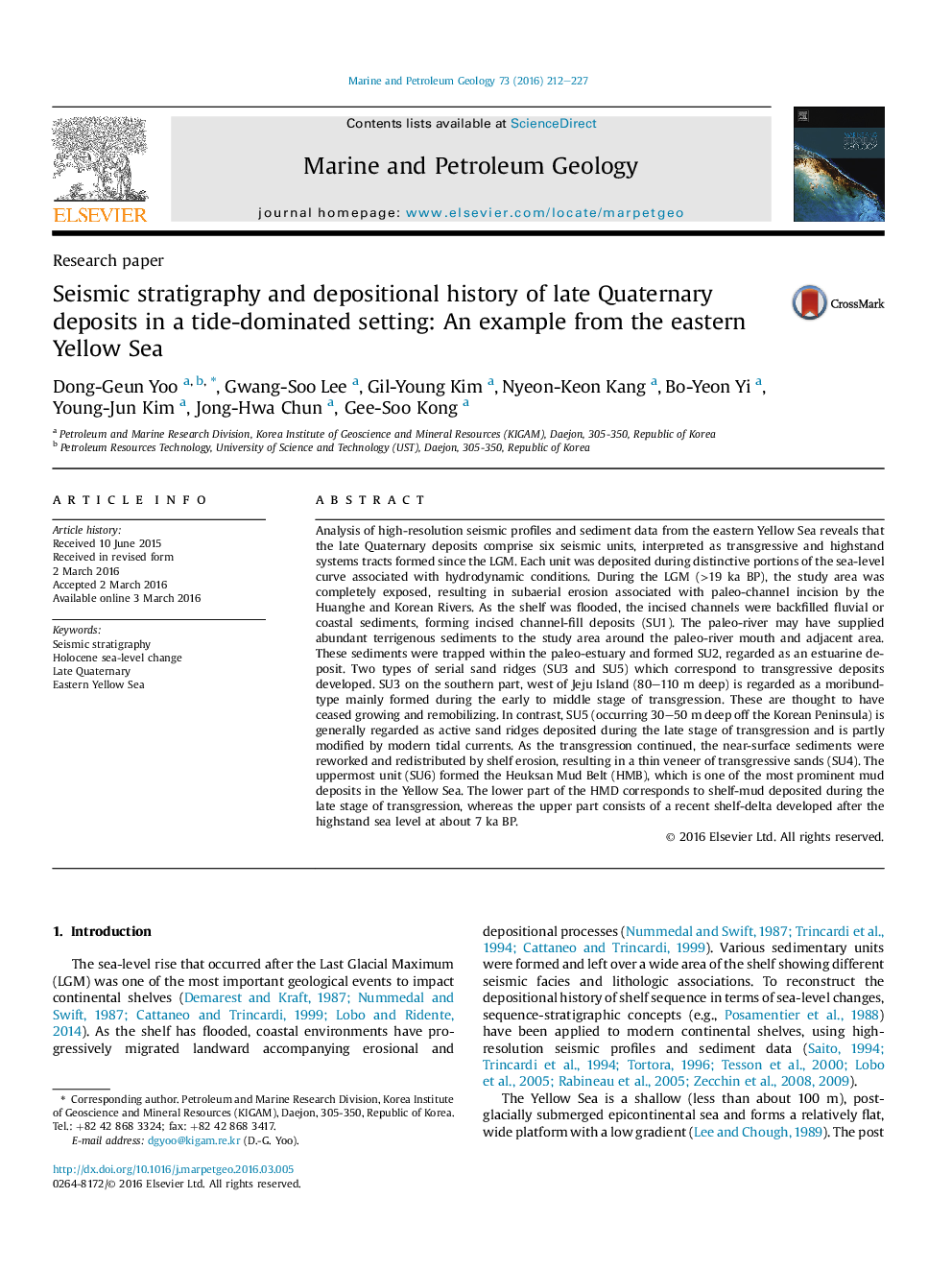| کد مقاله | کد نشریه | سال انتشار | مقاله انگلیسی | نسخه تمام متن |
|---|---|---|---|---|
| 6434793 | 1637154 | 2016 | 16 صفحه PDF | دانلود رایگان |
- Our research provides the results of late Quaternary sequence stratigraphy using seismic and core data.
- The shelf deposits comprise six seismic units, interpreted as TST and HST formed since the LGM.
- TST consists of paralic and marine unit bounded by the raviement surface.
- Each unit was deposited during distinctive portions of the sea-level curve associated with hydrodynamic conditions.
Analysis of high-resolution seismic profiles and sediment data from the eastern Yellow Sea reveals that the late Quaternary deposits comprise six seismic units, interpreted as transgressive and highstand systems tracts formed since the LGM. Each unit was deposited during distinctive portions of the sea-level curve associated with hydrodynamic conditions. During the LGM (>19 ka BP), the study area was completely exposed, resulting in subaerial erosion associated with paleo-channel incision by the Huanghe and Korean Rivers. As the shelf was flooded, the incised channels were backfilled fluvial or coastal sediments, forming incised channel-fill deposits (SU1). The paleo-river may have supplied abundant terrigenous sediments to the study area around the paleo-river mouth and adjacent area. These sediments were trapped within the paleo-estuary and formed SU2, regarded as an estuarine deposit. Two types of serial sand ridges (SU3 and SU5) which correspond to transgressive deposits developed. SU3 on the southern part, west of Jeju Island (80-110 m deep) is regarded as a moribund-type mainly formed during the early to middle stage of transgression. These are thought to have ceased growing and remobilizing. In contrast, SU5 (occurring 30-50 m deep off the Korean Peninsula) is generally regarded as active sand ridges deposited during the late stage of transgression and is partly modified by modern tidal currents. As the transgression continued, the near-surface sediments were reworked and redistributed by shelf erosion, resulting in a thin veneer of transgressive sands (SU4). The uppermost unit (SU6) formed the Heuksan Mud Belt (HMB), which is one of the most prominent mud deposits in the Yellow Sea. The lower part of the HMD corresponds to shelf-mud deposited during the late stage of transgression, whereas the upper part consists of a recent shelf-delta developed after the highstand sea level at about 7 ka BP.
Journal: Marine and Petroleum Geology - Volume 73, May 2016, Pages 212-227
